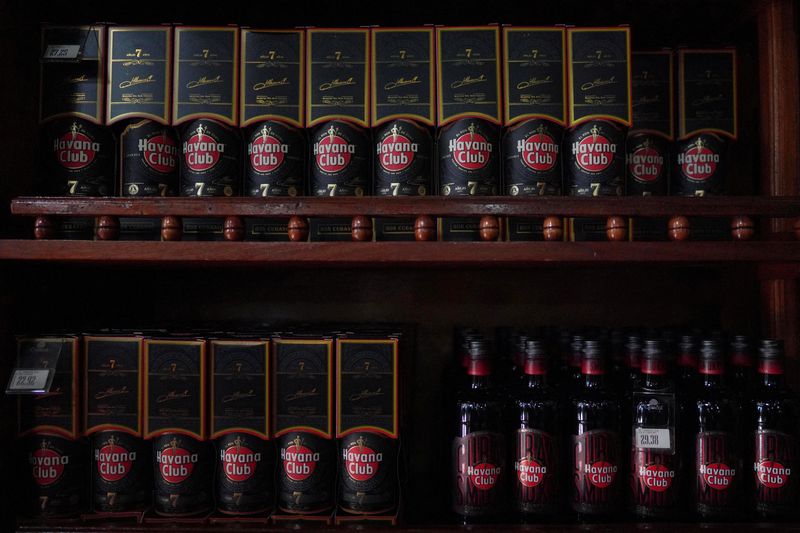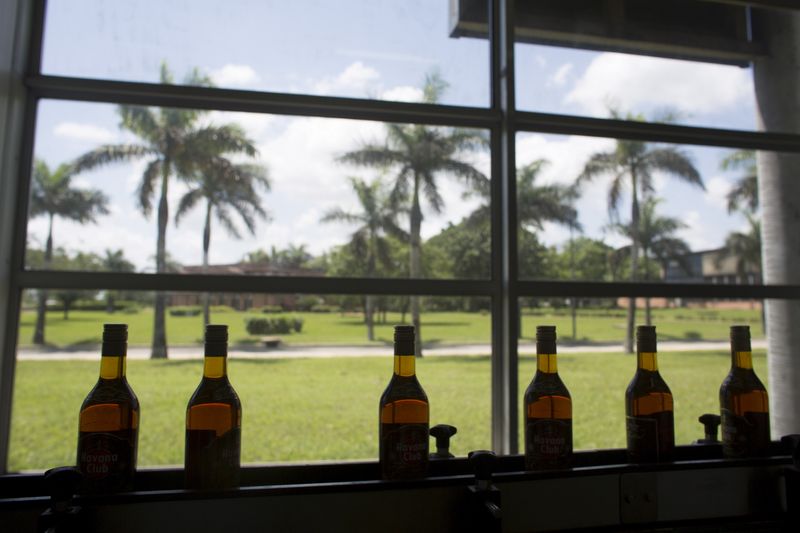By Marc Frank
HAVANA (Reuters) - Producers of Cuba's famous rum are feeling the pinch with local sugar output forecast to remain at record lows this season amid a grueling economic crisis which has dramatically reduced supplies of fertiliser, fuel and other inputs needed to grow cane.
The first of 25 state-owned sugar mills is set to crank up its machinery in the coming days with plans published in seven of 13 sugar-producing provinces pointing to similar output to last season’s 350,000 metric tons of raw sugar, down from 1.3 million in 2019.
Cuba produced 8 million metric tons of raw sugar in 1989, before the collapse of former benefactor the Soviet Union led to a steady decline.
"In recent years sugarcane production has decreased and we have to reverse this, because we not only lose sugar but also all its derivatives, including rum,” Cuban Vice President Salvador Valdes Mesa said at the close of the last harvest in June.
Christian Barre, director of Havana Club International, a state venture with French firm Pernod Ricard (EPA:PERP), recently told the press that the company was in constant contact with providers and had insured supplies of cane-based alcohol for the moment.
While Havana Club is the best known Cuban brand, other smaller ventures, such as Ron Santiago, a joint venture with Diageo (LON:DGE) PLC and Ron Vigía with a private investor also export.
One European businessman with intimate knowledge of the sector said rum makers are competing for the domestic cane-based alcohol with pharmaceutical and other industries that have the option of importing non-domestic alcohol.

“One can feel the pinch and there is not always the availability there was before,” he said.
Cuba has historically consumed up to 700,000 metric tons of sugar annually and exported the rest.
